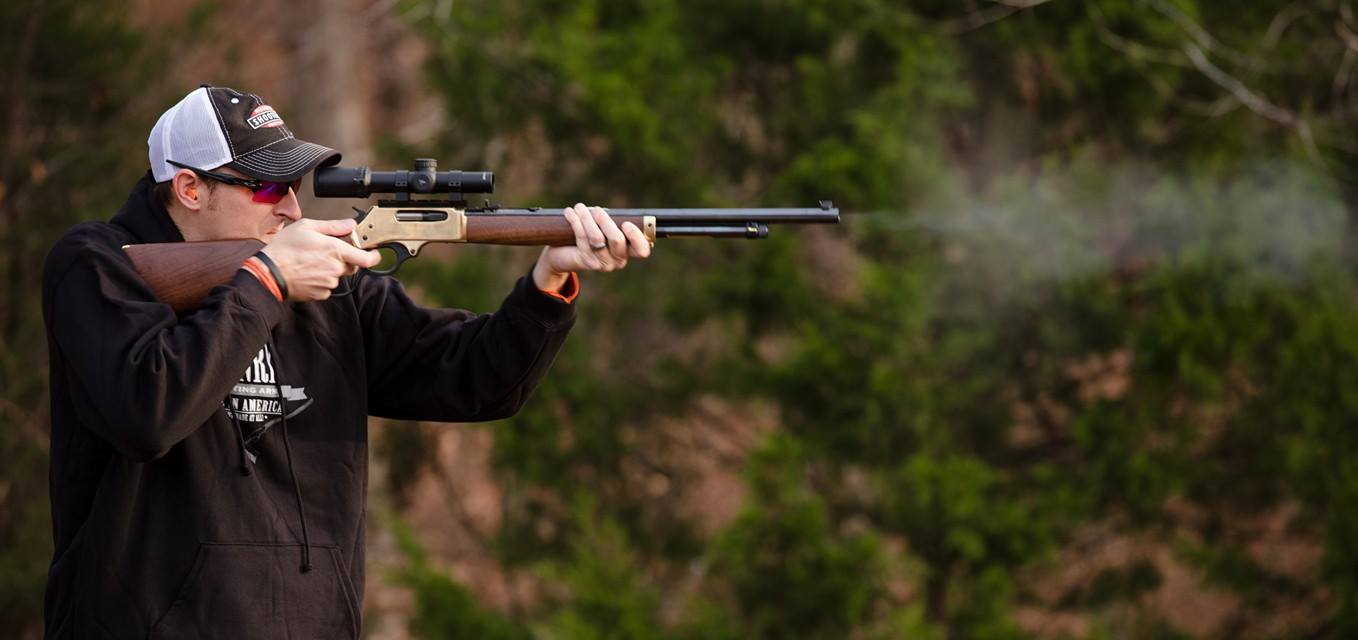Henry Is The People’s Choice
This article first appeared on AmericanShootingJournal.com
Quality products, an expanding user base, a responsive corporate culture and hands-on ownership have Henry Repeating Arms at the Top.
STORY AND PHOTOS BY OLEG VOLK
Although the brand dates to the middle of the 19th Century, the Henry Repeating Arms company that we know of today was founded in 1996 by a father-and-son team. Originally located in Brooklyn, it started production of .22 rimfire lever-action carbines in 1997. Ten years later, the headquarters moved to Bayonne, N.J. Around that time, Henry added a large production facility in Wisconsin, having bought out a major parts supplier. The two factories together add up to over 400 employees on nearly 250,000 square feet of floor space. In 20 years, Henry Repeating Arms produced more than 2.3 million rifles. Today, they are the seventh largest domestic gun maker in the US. That kind of success doesn’t happen by accident.
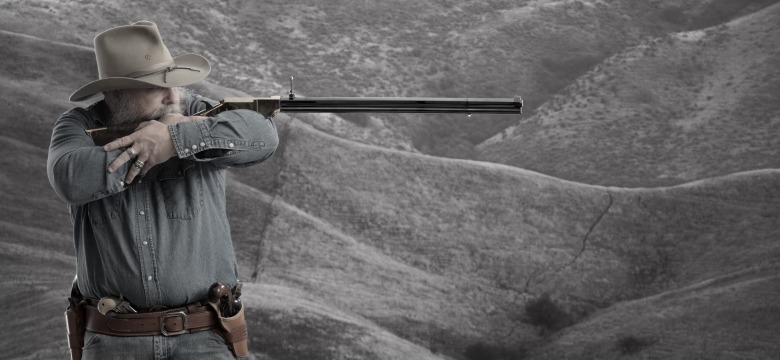
THE ORIGINAL HENRY RIFLE was an important technical milestone, but the brand itself lasted only six years, from 1860 to 1866. The manufacturer, New Haven Arms Company, became Winchester Repeating Arms and its 1866 “Yellow Boy” became a runaway commercial success. It improved on the original design by sealing the tube magazine from the environment, and made it more suitable to military use with gate loading through the side of the receiver.
The Henry brand name went unused until it was resurrected in style by Louis and Anthony Imperato. This wasn’t the first rodeo for Louis, who had resurrected the Iver Johnson brand back in 1973 and, for a time, produced commercial M1 carbines of good quality. With the Henry brand, production began with modestly priced .22 rifles of good mechanical quality but a cheap-looking finish, then quickly progressed to a much better fit and finish, and more recently to a vast variety of rimfire and centerfire models.

The mainstay of the Henry brand remains the original H001, with well more than a million manufactured. Originally introduced at about half the price of its Browning and Marlin competitors, this classic proved as accurate and as reliable. Produced in blued and brasslite finish, it set the visual pattern for most Henry models. More recently, a silvery weatherproof finish was added as an additional option for hunting rifles.
Almost all Henry lever-action models follow the same design, using a rimfire-style magazine with a removable follower. While slower to load than the King’s patent gate introduced on Winchester 1866, this style of loading doesn’t ding up bullets or catch fingertips in the spring-loaded gate cover.
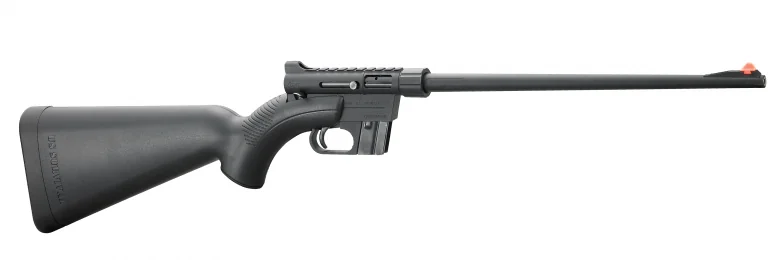
Henry’s lightweight AR-7 Survival Rifle in .22 fits inside its own waterproof stock when disassembled.
The tube magazine is covered by a wooden forend, except on the commemorative “Classic” 1860-style model with the original external magazine follower latch. The 1860 model improves on the original in the metallurgy and caliber options – .45 Colt or .44-40 Winchester instead of the weak and less safe .44 rimfire – without losing any of the historic feel. Considering that only 14,000 original Henry rifles were ever produced, having an extra 11,000 made for history buffs in the past couple of years definitely makes them more accessible to modern shooters. Henry also produces improved variants of the semiauto AR-7 Survival Rifle, a kids’ Mini Bolt and a pump in .22LR and .22WMR. Most recently, box magazine lever actions, break-open, and suppressor-ready models have been introduced – Henry clearly has no intention of resting on its laurels.
IN MY EXPERIENCE WITH HENRY OWNERS, I’ve found that few possess just one. In fact, it’s extremely common even for modest collections to have multiple lever actions, often spanning all calibers from .22 to .45-70. It’s also common for a Henry owner to buy additional Henry rifles as gifts for family members. Of all current rifle brands, Henry appears to command perhaps the highest customer loyalty. So, besides the good quality manufacturing and great accuracy, what draws and retains people to and with this maker to the exclusion of competing brands?
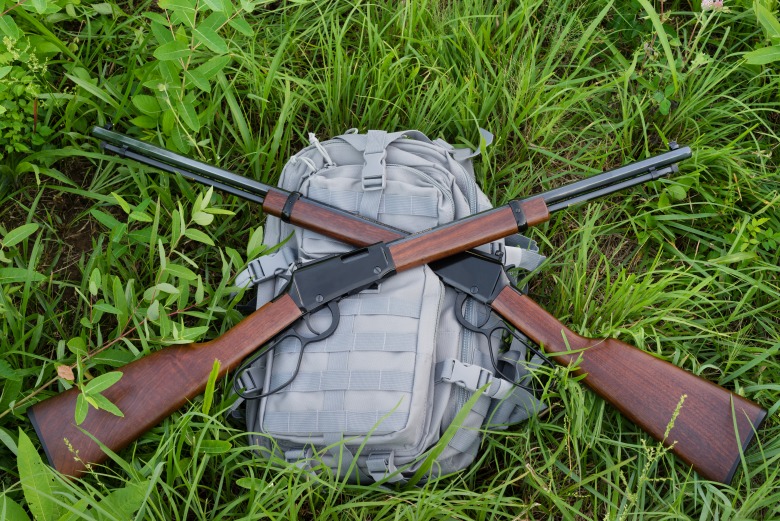
The common manual of arms across most of the line-up is a true but minor point. The simplicity of their half-cock safety compared to the lawyer-mandated crossbolt “safety” of other brands (something that may be better termed a “disabling button”) is another small point in Henry’s favor. Another brand’s manual of arms was a rude surprise to me: pulling the trigger with the safety on produced what seemed like a misfire, with no indication that the safety was engaged, just the condition for dangerous game hunting! No such issues with Henry .45-70 or smaller rifles.
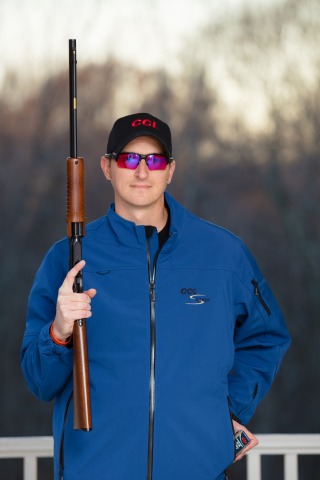
22plinkster, who goes by Dave Nash but withholds his real name, holds a Henry .22 WMR Pump Action Rifle.
Many new shooters who have tried lever actions alongside other types come back to the Henry rifles citing the subjective “fun of operation”, just hands-on enough to be interesting but sufficiently efficient for real-world uses such as hunting and marksmanship training.
Perhaps the more prominent reasons for the brand’s consistent popularity rest in the character of the company’s owner and employees. The slogan “Made in America or not made at all” speaks convincingly to people who prefer to see precision manufacturing jobs stay stateside. The lifetime warranty on rifles is another obvious argument for Henry. Since the defect rate is low, Henry has been able to honor warranties in a timely manner, and this sometimes includes completely replacing arms that have been damaged beyond repair by floods or fire.
Of all the current makers of firearms, the Henry company may have the most personally accessible owner. Deeply involved in the day-to-day operations of the company, Anthony Imperato remains reachable at trade shows and by phone or email. To Anthony, the reputation of the enterprise is a personal matter, and he tries to communicate with Henry customers as directly as possible. The personal involvement by him and other key members of the company has fostered an extensive and widely flung community of Henry rifle owners worldwide. As of this writing, the Henry Repeating Arms Facebook page has nearly 450,000 likes, an impressive level of popularity for a niche manufacturer selling a conservatively styled product.

Two Henry Big Boys on a safari, one in .45 Colt, the other in .45-70 Govt.
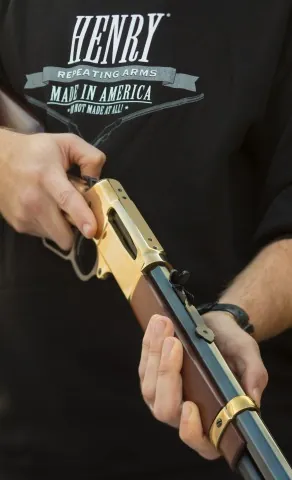
A Henry Big Boy in the classic .30-30 chambering.
As a student of commercial and political advertising, I must also note that when our previous president was snarking about people “clinging to their guns and their religion,” Henry print ads had a photo of a Bible in them. And while Henry doesn’t position itself as a “Christian” company, the manifested respect for its core constituency at the time when they were seemingly being beleaguered from the bully pulpit of the White House was a class act, and the attitude was noted and appreciated. Numerous tribute models celebrating public service and trade organizations – from the Boy Scouts to EMS – also added to the appreciation of the gun maker.
In the past two years, the number of models in the Henry line-up has nearly doubled. The expansion of its user base with less traditional owners has also accelerated, in part due to restrictions choking off more mainstream modern designs, and also to the quality and “non-scary” look of the rifles themselves. With a quality product, a growing user base, a responsive corporate culture, and a hands-on owner, Henry Repeating Arms seems to be the poised to carry the old brand name far into the future with a grander outlook than ever before.



